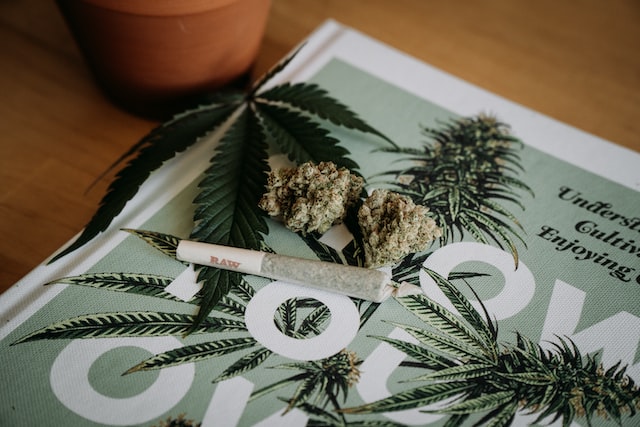In one of the more interesting cannabis studies, researchers set out to settle the THC vs. CBD debater once and for all. The results, perhaps unsurprisingly, showed that THC was far more effective at treating a variety of health symptoms when compared to CBD. The data was collected en-masse using ReleafApp, and included more than 20000 user sessions reporting 27 different symptoms.
CBD vs. THC — Which One’s Most Effective?


In a now-famous study, researchers at the University of New Mexico (UNM) set out to fill a significant gap in scientific literature by using mobile software technology to measure the real effects of daily cannabis use by millions worldwide.
For more of the latest medical, legal, and lifestyle news from the world of cannabis, download our free hemp news app.
Forget the Dogma, Look at the Science
Contrary to widespread media reports and scientific dogma that continues to this day, the psychoactive chemical tetrahydrocannabinol or “THC” showed the most substantial therapeutic effect. Conversely, the research showed a much weaker medical effect by the more-recently popular cannabidiol (CBD).
The study, titled “The Relationship Between Cannabis Product Characteristics and Symptom Relief,” was published in Scientific Reports by UNM researchers Sarah See Stith, associate professor in the Department of Economics, and Jacob Miguel Vigil, associate professor at the Department of Psychology. It concluded that the proportions of THC and CBD are essential in optimizing symptom relief in a variety of health conditions.
The findings were based on data from the largest real-time database of measurements, where patients provide information on the effects of cannabis in the United States. Data was collected using the ReleafApp, developed by co-authors Franco Brockelman, Keenan Keeling, and Branden Hall.
CBD and THC Data Collected By ReleafApp
Since its release in 2016, ReleafApp has been the only publicly available, free application for patient education and measuring the therapeutic effects of cannabis. It contains information on dried and concentrates, smoking methods, cannabis subspecies (Indica, Sativa, and hybrids ), and detailed content of cannabinoids (THC and CBD) in individual varieties and products. In addition, the data provided by the app provides invaluable user feedback on their health status, treatment choices, and their effects as measured by symptom relief and side effects.
The study aimed to address issues related to the knowledge of how the primary cannabinoids found in frequently used cannabis products influence consumer choices and how they affect symptom intensity levels. After 20,000 user sessions and 27 measured symptom categories, from depression to epilepsy, patients experienced an immediate improvement in symptoms by an average of 3.5 points on a 0-10 scale. Dried flowers were the most commonly used product, and using them was associated with a more significant improvement in symptoms than other types of products.
Cannabis is rapidly gaining ground as a moderate pain reliever. It is a promising substitute for prescription opioid drugs and other medications that often have unwanted side effects, dangerous drug interactions, and the risk of death. Currently, however, legal barriers prevent scientists from conducting cannabis research in the United States.
THC Delivers Greater Benefits
By examining THC and CBD products, the authors analyzed the relative importance of these cannabinoids in treating specific symptoms and the frequency of side effects. The research method also made it possible to determine how the two cannabinoids work at different concentrations. One of the most striking findings from the current results was that THC was generally associated with a more intense user experience as measured by symptom relief and the occurrence of both positive and negative side effects.
The authors warn, however, that cannabis use carries a risk of short-term cognitive and behavioral disorders and may not be effective for everyone. However, they added that only 9% of cannabis users become addicted to it, and the addiction itself is weaker than in the case of tobacco and pharmacological drugs.
—
(Featured image by Shelby Ireland via Unsplash)
DISCLAIMER: This article was written by a third-party contributor and does not reflect the opinion of Hemp.im, its management, staff, or its associates. Please review our disclaimer for more information.
This article may include forward-looking statements. These forward-looking statements generally are identified by the words “believe,” “project,” “estimate,” “become,” “plan,” “will,” and similar expressions. These forward-looking statements involve known and unknown risks as well as uncertainties, including those discussed in the following cautionary statements and elsewhere in this article and on this site. Although the Company may believe that its expectations are based on reasonable assumptions, the actual results that the Company may achieve may differ materially from any forward-looking statements, which reflect the opinions of the management of the Company only as of the date hereof. Additionally, please make sure to read these important disclosures.
First published by Fakty Konopne, a third-party contributor translated and adapted the article from the original. In case of discrepancy, the original will prevail.
Although we made reasonable efforts to provide accurate translations, some parts may be incorrect. Hemp.im assumes no responsibility for errors, omissions, or ambiguities in the translations provided on this website. Any person or entity relying on translated content does so at their own risk. Hemp.im is not responsible for losses caused by such reliance on the accuracy or reliability of translated information. If you wish to report an error or inaccuracy in the translation, we encourage you to contact us.



Comments are closed for this post.